#elamites
Explore tagged Tumblr posts
Text
I had the sanctuaries of the land Elam utterly destroyed and I counted its gods and its goddesses as ghosts. I destroyed and devastated the tombs of their earlier and later kings. I took their bones to Assyria. I prevented their ghosts from sleeping and deprived them of funerary-offerings and libations of on a march of one month and twenty-five days. I devastated the districts of the land Elam and scattered salt and cress over them. As for the rest of the people, those still alive I myself now laid flat those people there as a funerary-offering. I fed their dismembered flesh to dogs, pigs, vultures, eagles, birds of the heavens and fish the apsû. What was left of the feast of the dogs and swine, of their members which blocked the streets and filled the squares, I ordered them to remove from Babylon, Kutha and Sippar, and to cast them upon heaps. The nobles and elders of the city came out to me to save their lives they seized my feet and said, “If it pleases you, kill. If it pleases you, spare. If it pleases you, do what you will in strife and conflict.” I besieged and conquered the city. I felled three thousands of their fighting men with the sword. I captured many troops alive. I cut off some their arms and hands. I cut off of others their noses earth and extremities. I gouged out the eyes of so many troops. I made one pile of the living and one of heads I hung their heads on trees around the city I felled fifty of their fighting men with the sword, burnt two hundred captives from them and defeated in a battle on the plain three hundred and thirty-two troops. With their blood I dyed the mountain red like red wool and the rest of them, the ravines and torrents of the mountain swallowed. I carried off captives and possessions from them. I cut off the heads of their fighters and built there with a tower before their city, I burned their young men, women, and children to death. I flayed as many nobles as had rebelled against me and draped their skins over the pile of corpses. Some I spread out within the pile; some I erected on stakes upon the pile. I flayed many right through my land and draped their skins over the walls. I cut their throats like lambs. I cut off their precious lives as one guts a string. Like the many waters of the storm, I made the contents of their gullets and entrails run down upon the wide earth. My prancing steeds harnessed from the riding, plunged into the streams of their blood as into a river. The wheels of my war chariot, which brings low the wicked and evil, where bespattered with blood and filth. With the bodies of their warriors, I filled the plain, like grass. Their testicles I cut off and tore out their privates like the seeds of cucumbers. Their blood, like a broken dam, I caused to flow down the mountain gullies. I hung the heads of Sanduarri and Abdi-Milkutti on the shoulders of their nobles and, with singing and music, I paraded through the public square of Nineveh.
— Ashurbanipal, King of the Neo-Assyrian Empire's account of his destruction of the Elamites
The Assyrian conquest of Elam took place in 639 BCE. Elam was destroyed completely, but the Neo-Assyrian Empire itself did not long survive them and was conquered thirty-four years later by the Neo-Babylonian king, Nabopolassar, and Cyaxares, King of Media.
4 notes
·
View notes
Photo
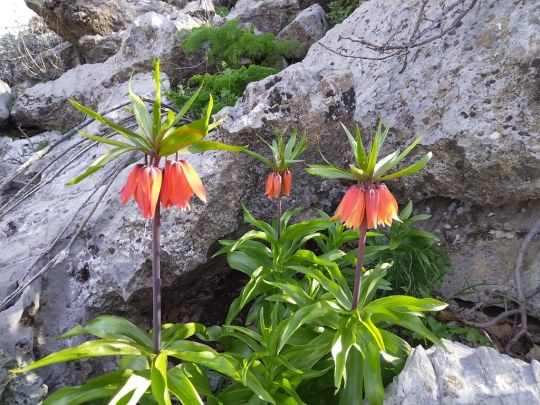
Nature of Kurdistan by Kurdistan Photo كوردستان , https://flic.kr/p/2ouQbqY
8 notes
·
View notes
Text

kneeling bull holding a spouted vessel | ca. 3100–2900 BCE | proto-elamite
in the met museum collection
1K notes
·
View notes
Text

An Elamite Copper Zebu,
Circa Late 3RD Millennium B.C.
Standing, the head with projecting ears and short, tapering, curving horns, almond-shaped eyes with concentric rings, prominent neck hump and dewlap, and long, straight tail reaching down to its hooves.
5¾ in. (14.6 cm.) long
453 notes
·
View notes
Text

Vessel in the form of a boar Proto-Elamite, SW Iran, c.3100–2900 BCE Ceramic, paint, 6 × 6 5/16 × 2 11/16 in. (15.2 × 16 × 6.9 cm) The Metropolitan Museum of Art, New York 1979.71
“This ceramic vessel takes the form of a standing wild boar. The body is hollow, serving as a container, with a small round rim atop the center of the back and a hole pierced through the snout. The vessel could have been filled through the larger hole in the back while the smaller hole in the snout was held closed with a thumb, allowing the liquid to flow out once the snout was uncovered. Made of fine clay with a smoothed surface, the vessel is decorated in dark brown paint on buff-colored ceramic. The sharply angled hatching covering the vessel evokes the boar’s bristly hide, especially along the spine, where it is arranged in a vertical row. The eyes are indicated by circles with a central dot, just below the small, alertly raised ears. The split hooves and fetlocks are modeled in clay. The boar’s hunched posture lends the vessel a sense of potentially explosive movement, and reminds the viewer that wild boars are fierce animals that pose dangers to crops in the field, and to the hunters pursuing them. Similar zoomorphic, or animal-shaped, vessels are especially characteristic of the Proto-Elamite period (3100-2900 B.C.) in southwestern Iran.”
#animals in art#ancient art#boar#animal effigy#Proto-Elamite art#Iranian art#effigy vessel#ceramics#pottery#sculpture#Metropolitan Museum of Art#Middle Eastern art
161 notes
·
View notes
Text

This limestone hedgehog, mounted on four wheels, was discovered near the temple of Inshushinak in Susa, Iran, dating to the Middle Elamite period, circa 1500-1200 BC. The piece is currently on display at the Louvre Museum.
156 notes
·
View notes
Text

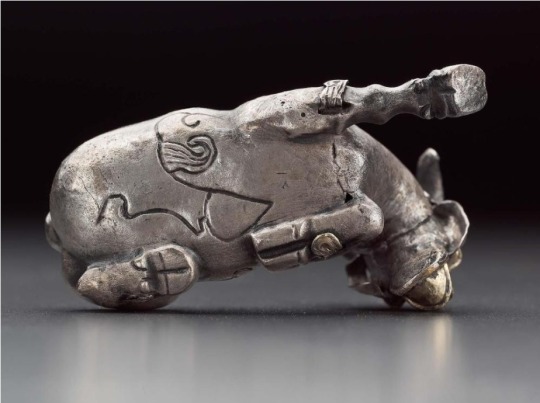
~ Mountain goat.
Place of origin: Near Eastern, Iranian
Period: Elamite, Proto-Elamite
Date: 3500–2700 B.C.
Medium: Silver and sheet gold.
#ancient#history#ancient art#museum#archeology#ancient sculpture#ancient history#archaeology#iran#iranian#near east#near eastern#elamite#3500 b.c.#2700 b.c#silver#goat#mountain goat
2K notes
·
View notes
Text
Hedgehog on Wheels, from Iran, c.1500-1100 BCE: this 3,500-year-old figurine of a hedgehog on a wheeled platform was found with several similar artifacts depicting animals on carts

The body of the hedgehog measures just 2.8cm long (about 1.1 inch) and was crafted out of limestone, while the cart was made using a bitumen compound. The hedgehog's feet are attached to four round sockets located at the front of the cart.

There are eight more empty sockets at the back of the platform, and their pattern/spacing could indicate that two smaller hedgehogs were originally mounted on the cart just behind this larger one, like a pair of baby hedgehogs following their mother.

The hedgehog was found with another figurine depicting a lion on a wheeled platform. Both of these artifacts were unearthed at the Temple of Inshushinak, located in what was once the ancient city of Susa; they date back to the Middle Elamite Period, c.1500-1100 BCE.

Their original function/significance is still widely debated, with some experts arguing that they were created as toys, while others argue that they were used as votive offerings. Their presence in the temple suggests that they likely had some cultural/ritual significance, but it's important to note that those two explanations may not be mutually exclusive -- some artifacts were used as both toys and ritual objects.
The distinction between those two terms is not necessarily as clear-cut as it seems, because toys are often incoporated into ritual contexts (as offerings or grave goods, for example) and they can also be used to familiarize children with rituals and religious beliefs.

Regardless of why they were made, they are strikingly adorable.
Sources & More Info:
The Louvre: Hedgehog Toy & Lion Toy
Metropolitan Museum of Art: Artifacts from The Royal City of Susa
Journal of the British Institute of Persian Studies: Probing the Margins in Search of Elamite Children
Portrait of a Plaything: Hedgehog
Cambridge University Press: Ritual, Play, and Belief in Evolution and Early Human Societies
#archaeology#artifact#history#anthropology#hedgehog on wheels#toys#votive offerings#susa#elamite#iran#ancient art#hedgehog#ancient toys#ritual artifacts#children in archaeology#art#sculpture#animal figurine#ancient near east
136 notes
·
View notes
Text

Green tuff cylinder seal, Proto-Elamite, circa 2800 BC
from The British Museum
230 notes
·
View notes
Text

Iran Police Seize 2 Golden Elamite Masks More than 2000-Years-Old
The Bushehr provincial police chief seized some holy relics, including two more than 2,000-year-old golden masks, in an operation against antiquities smugglers.
The experts of the Cultural Heritage Department estimated that these objects are more than 2000 years old, dating back to the pre-Achaemenid period and the late Elamite period.
“The seized artifacts include two gold masks, a bowl, statues, and several pottery items,” Esmaeel Sajjadi-Manesh stated on Sunday. “Which experts from the provincial office have dated back to the Parthian and Elamite periods.”
“Among the items recovered, one of the most valuable is the gold mask, estimated to be over 2,000 years old,” he noted, “The mask was reportedly being sold for several billion tomans (about 50.000 USD) during the illegal transaction.”
The Elamite Empire is where Bushehr originated, according to research conducted in 1913 by a French excavation team. The Elamite civilization was an ancient culture located in what is now western Iran, existing roughly from 3000 to 500 BCE. Elamites are known for their rich artistic traditions and complex social structures.
Typically, Elamite period golden masks were used in burial rituals as a symbol of the passage to the afterlife. These masks often featured intricate designs and served as representations of the human face, imbued with religious or ritual significance. The craftsmanship of Elamite gold masks showcases detailed workmanship, often incorporating various symbols that reflect their beliefs and values.
These artifacts are very important for the understanding of Elamite culture and for obtaining information about social and religious practices.
By oguz kayra

#Iran Police Seize 2 Golden Elamite Masks More than 2000-Years-Old#gold#gold mask#looted art#stolen art#ancient artifacts#archeology#archeolgst#history#history news#ancient history#ancient culture#ancient civilizations#Elamite history#Elamite empire#Elamite art#ancient art#art history
32 notes
·
View notes
Text

Many folc sprecan þæt ealdne tunge.
I noticed this too the last time I was at my dermatologist. I was tempted to pick Elamite just to show off. "Yes, I'm here about the arrow I took to the knee and also this offer of fine quality copper from the best number one seller my dear friend Ea-Nasir."
39 notes
·
View notes
Photo
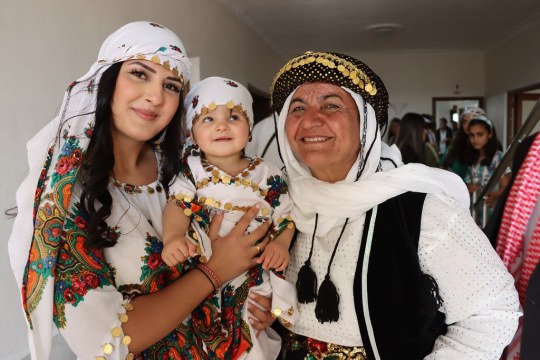
Çarşema Sor by Kurdistan Photo كوردستان Cejna Çarşema Sor li we pîroz be ژبو هەمو ئێزیدیا : جەژنا خیشکو برایێت ئێزدی پیرۆز کەم و هیڤیدارم ئەڤ جەژنە مللەتئ مە کەیف خوش و سەر فراز کەت هەمی ئێش و نەخوشیێن مللەتئ ئێزدی وەندا کەت 🙏 لكل الايزيدين : كل عام وانتم بخير ، و عيدكم مبارك اتمنى آن يطوي هذا العيد اخر صفحة من صفحات الظلم و الاضطهاد الذي عاناه شعبنا الايزيدي https://flic.kr/p/2ouVquA
4 notes
·
View notes
Photo


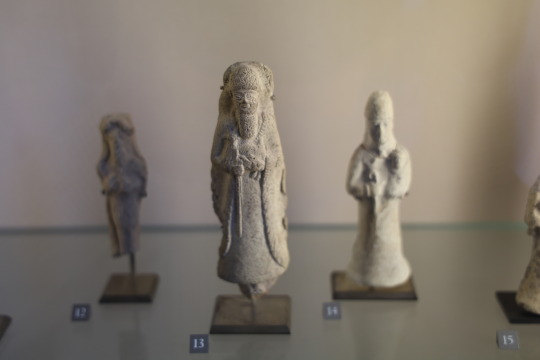

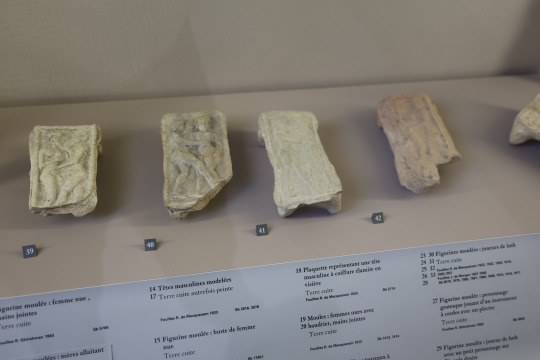
Terracottas from Susa, Iran Middle Elamite period, 14th-12th centuries BCE
Musée du Louvre
190 notes
·
View notes
Text

vessel in the form of a boar | ca. 3100-2900 BCE | proto-elamite
in the met museum collection
142 notes
·
View notes
Text
Classing Dunmeris as a semi-syllabary writing system. This covers the use of the Daedric writing system as both an alphabet and a syllabary. Don't get me started on Dwemeris clearly missing vowels in the way its read.
#tes ramblings#i just schooled someone in linear elamite vs cuneiform#wedge cuneiform is a wedge!#anyway both are mixed writing systems and its got me thinking about Josh having to crack the code
7 notes
·
View notes
Text
#MetalMonday:


Figurine of a mountain goat
Iranian, Proto Elamite, 3100-2750 BCE
Silver & sheet gold, 4 x 7 cm (1 9/16 x 2 3/4 in.)
On view at Museum of Fine Arts, Boston
“This object is one of the earliest surviving Near Eastern sculptures in precious metal. The goat is made of silver and plated with gold on the face.
Incised lines illustrate the texture of the goat's hair and beard. One leg protrudes far from the body, two are held in close, and the last is only visible as an incised outline carefully etched into the figurine's underside.”


additional images via https://collections.mfa.org/objects/155898/mountain-goat
#animals in art#museum visit#mountain goat#metalwork#silver#gold#figurine#sculpture#Iranian art#ancient art#Elamite art#Proto Elamite art#Museum of Fine Arts Boston#Metal Monday
180 notes
·
View notes